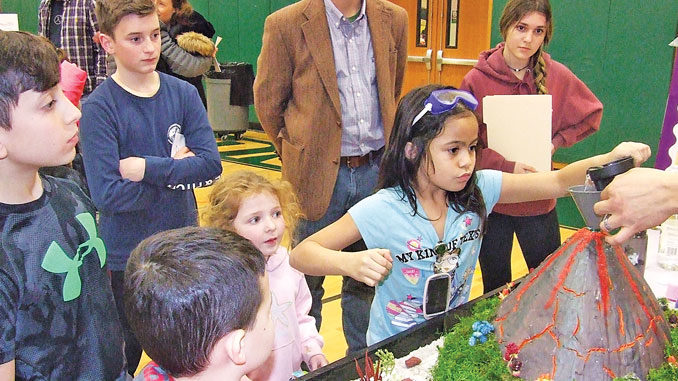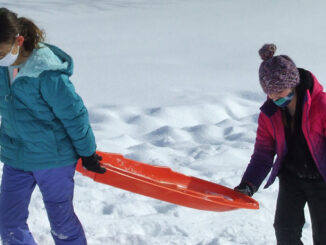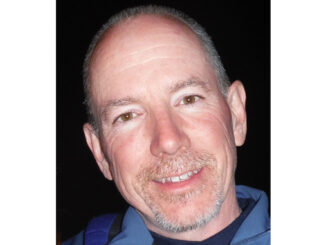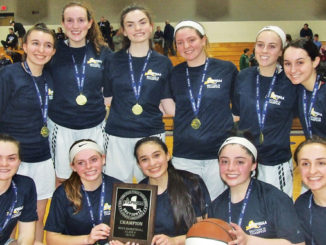
Cornwall Central School District third and fourth graders had their mad scientist caps on last week for the annual elementary science expo, at the middle school.
There were a number of unique experiments on display in the gym, as well as some common favorites. The young scientists proudly explained their projects, to students and parents, showed how they arrived at their hypothesis and conclusion, and even offered a demonstration.
To greet guests to the expo was a flat screen television with a game of Mario Kart on display. Although Eric Milton and Matthew Zareski are too young to drive, they used the racing game to conduct an experiment on distracted driving. They questioned how accurately someone might be able to drive while their attention was somewhere else.
Their experiment involved four test subjects playing the game under normal conditions. The test subject then had to continue playing while having objects thrown at them, while eating and drinking, and while texting on a cell phone. The experiment showed the four subjects performed worse while eating and texting.
While a normal race took about 97.8 seconds to complete, it took 127.4 seconds to finish while texting.
Lukas Shuck and Major Velasquez created solar panels with glass slides, graphite, titanium dioxide, and raspberry juice and attempted to illuminate a light bulb inside a Lego house. They hypothesized seven solar panels would absorb enough energy to light the bulb. Using the power of two AA batteries, they later determined 501,298 panels would be needed to generate enough power to light the bulb.
Finnian Dill studied neural networks and how the human brain interprets sensory data to recognize patterns. He then offered photos of blueberry muffins and Chihuahuas, as well as hotdogs and legs, challenging passersby to guess which is which.
No science fair would be complete without something exploding, such as lava from a volcano or soda from a bottle.
Braden Work was one of a number of students who mixed Mentos with soda to determine the result. Using a variety of different sodas, Work measured the height of the eruption when a Mentos candy was dropped into the carbonated beverages.
The explosion from the Diet Coke reached one foot while the Orange Fanta only registered a half inch.
Yet another science fair favorite was studying the impact of bacteria on food and our bodies.
Emma Vazquez took cultures from common surfaces like the kitchen sink, finger, mouth, apple, a cat’s teeth, piano keys, and a turtle tank and allowed the bacteria to grow in petri dishes.
Sophia Ferraro and Olivia Oliveri took two brands of bread and observed the growth of mold when the slices were exposed to hands cleaned with hand sanitizer, handled with dirty hands, and rubbed on the surface of a Chromebook.
Thomas O’Brien conducted an experiment to determine if his mouth was cleaner than his dog’s mouth. Safe to say the dog had more bacteria.
Speaking of growing, Clair Creech and Kayla Slattery tested inorganic and organic strawberries and raspberries to figure out which would rot first. All fruits had the same expiration date and were kept in the original container, unwashed. Observed for 14 days, the organic fruits started to rot first.



